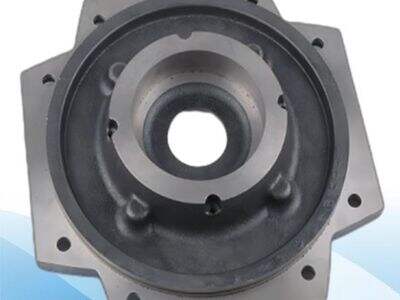There are many types of materials that can be used for different engineering efforts such as cast iron or ductile iron. Having trade background—solids, composites, alloys, and plastics, is also important in order to select the proper tool for the specific job. And now, let's find out more about these two kinds of iron!
What is Cast Iron?
Cast iron is a tough and brittle substance. It is produced by melting iron with other elements, such as carbon and silicon. Cast iron is strong and used to hold heavy things, so it wasn't unusual for parts like engine blocks and machinery to be made with it. However, cast iron is not a particularly malleable material. It can snap easily if it is pulled or hit hard.
What is Ductile Iron?
Ductile iron is a more pliant material. The melted iron is mixed with a special element known as magnesium to make this iron. This makes it stronger and tougher than cast iron. Ductile iron is used in applications where it is subject to impact, such as pipes and motor vehicle components.
Cast Iron Versus Ductile Iron: How to Make the Right Choice
Because of its comparative weakness, engineers need to consider strength and flexibility when selecting cast iron vs Ductile Iron Casting for a project. Cast iron is incredibly strong in compression, but poor in bend, so it can fail if it is forced to flex.
Ductile iron is a paradigm of strength and pliability. It may not be as strong as cast iron, yet it is able to bend rather than break. That makes it more suitable for projects that require some flexibility.
victorian fever dream How Microstructure Affects Strength
Microstructure, or the way a material is constructed at the smallest level, is crucial. Cast iron has graphite flakes suspended in a matrix of ferrite and pearlite. This lattice structure makes cast iron strong but also prone to cracking.
With the ductile iron, magnesium alters the microstructure to contain round graphite pieces in a comparable ferrite-pearlite mix. That allows ductile iron to bend when stressed, rather than break. That is why ductile iron can withstand impacts better than cast iron.
Make The Right Decisions For Engineering Projects
SYNTHESIS: What Engineers Need to Consider When Choosing Materials Engineers choose the right material for a project by taking into consideration what gets needed. Understanding what makes cast iron different from ductile iron helps them make wise decisions.
For projects requiring sturdy support for heavy loads, cast iron is sometimes the way to go. If it needs to flex and deflect impact, ductile iron it is. Choosing the appropriate material enables projects to operate more efficiently and endure longer.
THE DESIGN OF OUR STRUCTURES Balancing Strength and Flexibility
One of the most significant challenges in engineering is finding the right balance between strength and flexibility. Engineers have to wait and think how strong they want something to be and how much it has to bend.
What Makes This Knowledge Useful for Engineers Like YouUnderstanding cast iron and ductile iron helps engineers make better decisions. Whether they require strong materials or flexible ones, they have to see both sides in order to receive the best results.

 EN
EN
 CS
CS
 DA
DA
 NL
NL
 FI
FI
 FR
FR
 DE
DE
 EL
EL
 IT
IT
 JA
JA
 KO
KO
 PL
PL
 PT
PT
 RU
RU
 ES
ES
 TL
TL
 ET
ET
 TH
TH
 MS
MS



